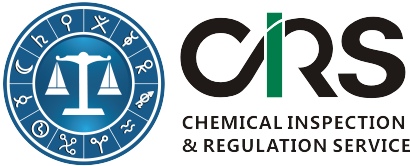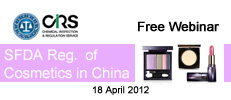China SFDA re-consults on categorized management measures for non-special use cosmetics.
Original Article by CIRS
29 May 2012, the Chinese State Food and Drug Administration (SFDA) has issued a notice No. 263-2012 inviting public comments on the amended categorized management measures for non-special use cosmetics. The draft measures have been amended after the SFDA’s notice 57-2012 to propose to move some ordinary cosmetics into type II special use cosmetics has received strong objections from industry associations. The deadline for receipt of comments is 15 June 2012.
According to the latest draft administrative measures, non-special use cosmetics will be regulated based on the safety risks of the cosmetics. Cosmetics will continue to be regulated in two categories as follows: special use cosmetics and ordinary cosmetics. The concept of Type II special use cosmetics and Type I special use cosmetics will be revoked. The main content of the measures can be found below:
Changes of Definitions of Freckle Removal Cosmetics
Freckle removal now also consists of cosmetics intended for whitening and keratin removal except whitening cosmetics through physical cover. Non-special use cosmetics intended for whitening and keratin removal will be treated as special use cosmetics due to their high risks.
Safety Risk Monitoring of Some Non-Special Use Cosmetics
The safety risks of the following non-special use cosmetics will be monitored by SFDA for two consecutive years. SFDA will conduct risk assessment based on information collected from safety risk monitoring and decide whether to regulate them as special use cosmetics.
- Hair care products that claim to have the effect of secretion control of oil on the skin of head;
- Hair care products that claim to have the effect of dandruff removal;
- Cosmetic products that claim to have anti-wrinkle effect;
- Cosmetic products that claim to reduce or alleviate bags under the eye;
- Hidroschesis product(excluding perfumes);
- Cosmetic products that claim to reduce dark circles under eyes;
- Cosmetic products that claim to have Exfoliating effect;
- Cosmetic products that claim to have tanning effect;
- Cosmetics for lips(excluding those without colorants) and eyes(excluding eyebrow pencil)
Strict Supervision of Cosmetics for Special Human Groups
The SFDA will standardize the registration and review of cosmetics for children in accordance with the guidelines for the registration and evaluation of cosmetics for children published this year. The SFDA will also strengthen the supervision of cosmetics for children after approval license has been issued.
To protect the safety of special human groups, the SFDA has required that cosmetic companies not claim that cosmetic products are specifically made for special human groups such as pregnant women or breastfeeding women.
Background Information
In China, special use cosmetics and ordinary use cosmetics are managed in different ways. Special use cosmetics are usually deemed as cosmetics with special functions (i.e., hair growth, sun block) while ordinary use cosmetics do not have special uses. Companies who plan to place cosmetics on the Chinese market must apply for and obtain a hygiene license for special use cosmetics or record-keeping certificate for ordinary use cosmetics from the SFDA.
The current classification system is listed in the table below:
| Type of Product | Required SFDA License |
|---|---|
Ordinary use cosmetics hair care, nail care, skin care, perfumes and make-up |
Record-keeping Certificate
|
Special use cosmetics products for hair growth, hair dye, hair perm, hair removal, breast shaping, fitness, deodorizing, spots removal and sun block |
Hygiene License
(More expensive and time-consuming. Technical review is required.)
|
There are many reported safety accidents associated with non-special use cosmetics in China in the past 3 years. To strengthen the management of ordinary use cosmetics, the Chinese State Food and Drug Administration (SFDA) has issued a notice No. 57-2012 to propose to change how cosmetics shall be categorized in China and adjust registration requirements for different types of cosmetics. The biggest proposed change is that some of non-special use cosmetics under the current law will be moved to type II special use cosmetics and be subject to stricter requirements. More info about this notice can be found here.
The notice No 57-2012 has received strong objections from cosmetic industry associations and cosmetic companies in China after it was published. Industry associations believe the SFDA does not have the authority to create a new type of cosmetics (Type II special use cosmetics), which does not exist in Chinese cosmetics law at all. They also have the opinion that moving lots of ordinary cosmetics into type II special use cosmetics will be a big burden on cosmetics industry and slow SFDA’s technical review process significantly. They suggest that SFDA focus more attention on post-approval supervision rather on registration.
Some of objection opinions can be found here.
Reference
http://www.sda.gov.cn/WS01/CL0781/72155.html
Contact our expert
Ms April Guo, Regulatory Affairs Specialist for Cosmetics/Cosmetic Ingredient, CIRS China
11/F., Building 1, Dongguan Hi-Tech Park, 1288 Chunbo Road, Binjiang District, Hangzhou 310052, China
Tel: +86-571 8720 6555 | Fax: +86-571 8720 6533
Email: april.guo@cirs-reach.com

